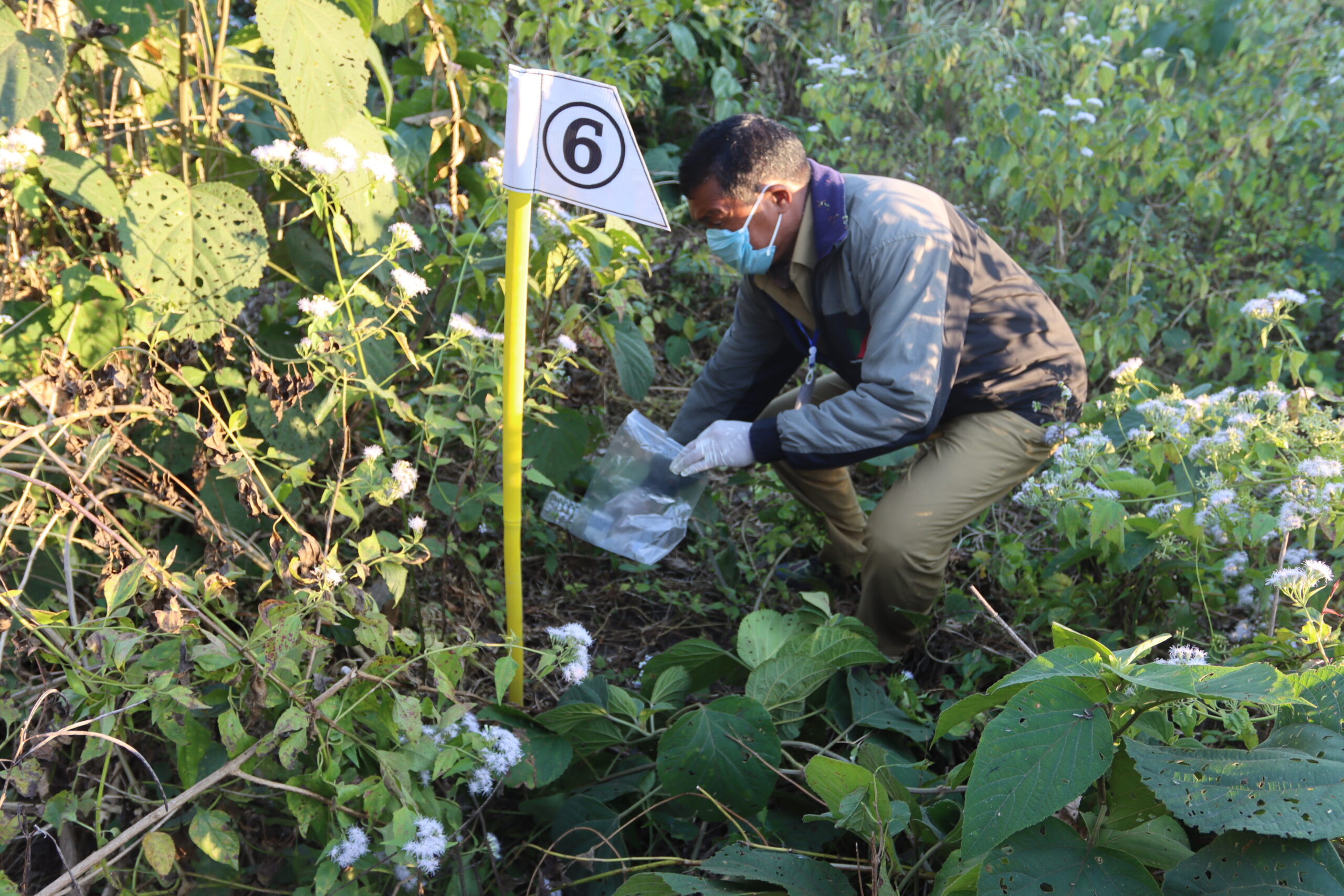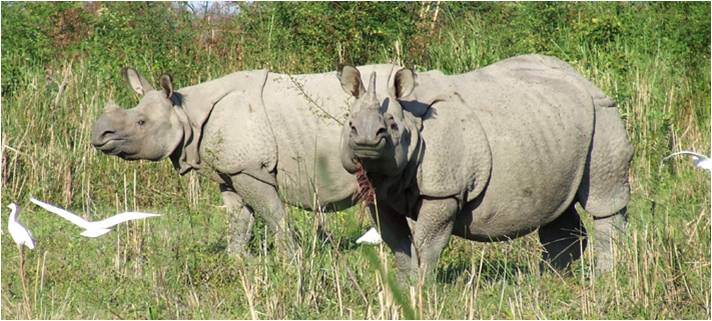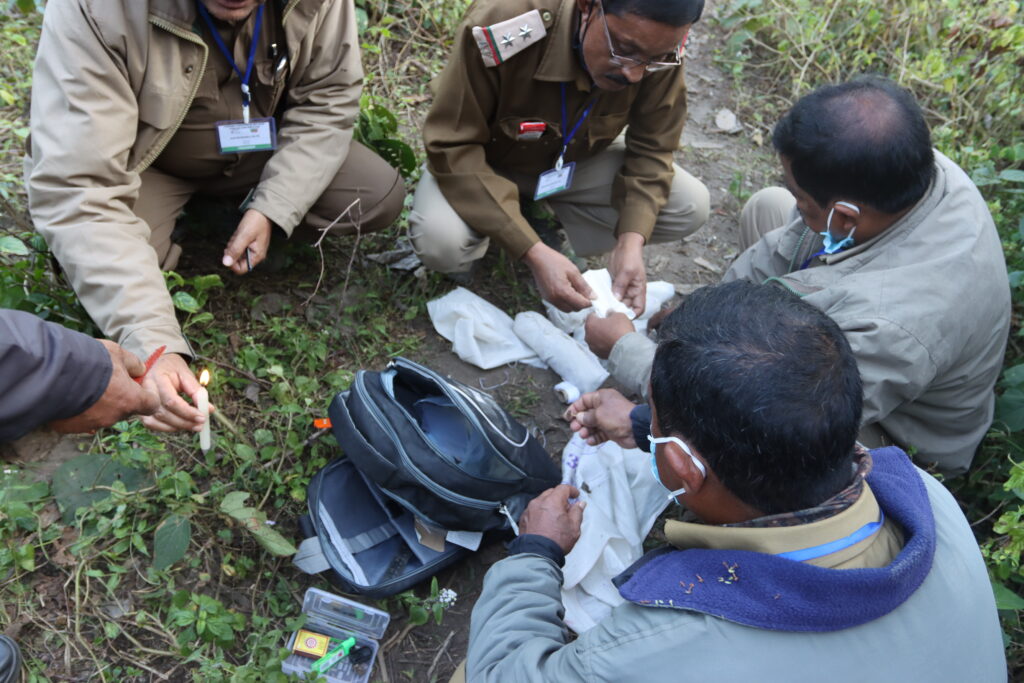Solving a Mystery in India

It was May and the monsoon season had already begun in India. In the early morning mist, the forest guards in Orang National Park were on their regular patrol. But this would not be a regular morning.
In the distance they spotted a rhino. It wasn’t moving. This is never a good sign, and usually means that a rhino has been poached. As they got closer, they noticed the rhino was bleeding and its signature horn – just one, as India is home to the greater one-horn rhino species – was gone.

The forestry department moved quickly to secure the crime scene and any evidence that would help investigators. Arriving at the immobile rhino, they saw something strange. The rhino was alive!
Though the rhino was alive, it was severely injured. The wound on his face was open, and it had lost a lot of blood. Forestry officials suspected that this male, might have lost the horn during a territorial fight with another bull.
A team of veterinarians was dispatched to care for the injured animal. Upon examination, they found the horn was removed by a saw, and strangely, antibiotics had been applied to the wound. They determined that someone had darted the rhino with a sedative to remove the horn. It was a poaching incident – the first in five years in the national park.
Once it was determined that this was a poaching incident, investigation teams were called to the area. They were facing a huge challenge though. The case was already 8 or 9 days old, and the rhino had wandered far from the area where the event had occurred. The normal forensic evidence would be difficult to find.

The question puzzling investigators is why would poachers go through the effort of drugging the rhino and even using antibiotics to keep it alive? The drugs used are uncommon and difficult to obtain, which could indicate that a larger criminal network or syndicate might be involved.
Investigators can use phone records to determine potential suspects. However, the location and time of the crime are needed to obtain the data. With such a wide time frame, they would have to use another strategy. They would need the help of an informant network.
Authorities looked at the possibility that the poachers were helped by an individual who might have inside information, which is always a possibility in wildlife crime cases. They interviewed several suspects but did not find any evidence of collusion.
To date, no arrests have been made in this case. The rhino has recovered from the ordeal and its wounds have healed. Though the case has gone cold, investigators have not given up. Successful arrests and prosecutions have occurred even several years after a poaching incident. This case remains open, and the uniqueness of this poaching incident leaves authorities with multiple clues that may uncover more evidence and lead to an eventual arrest.
Thanks to intensive efforts by the Government of India and park authorities, rhino poaching in India has declined significantly, from 41 rhinos poached in 2013 to just 1 in 2021. But India’s rangers must remain ever vigilant. Demand for rhino horn in China and Vietnam remains high, and poachers will take any opportunity to kill rhinos.
Join the fight against wildlife crime. You can help ensure that wildlife criminals will be found, arrested and prosecuted by purchasing an Investigative Kit for forest guards in India.
